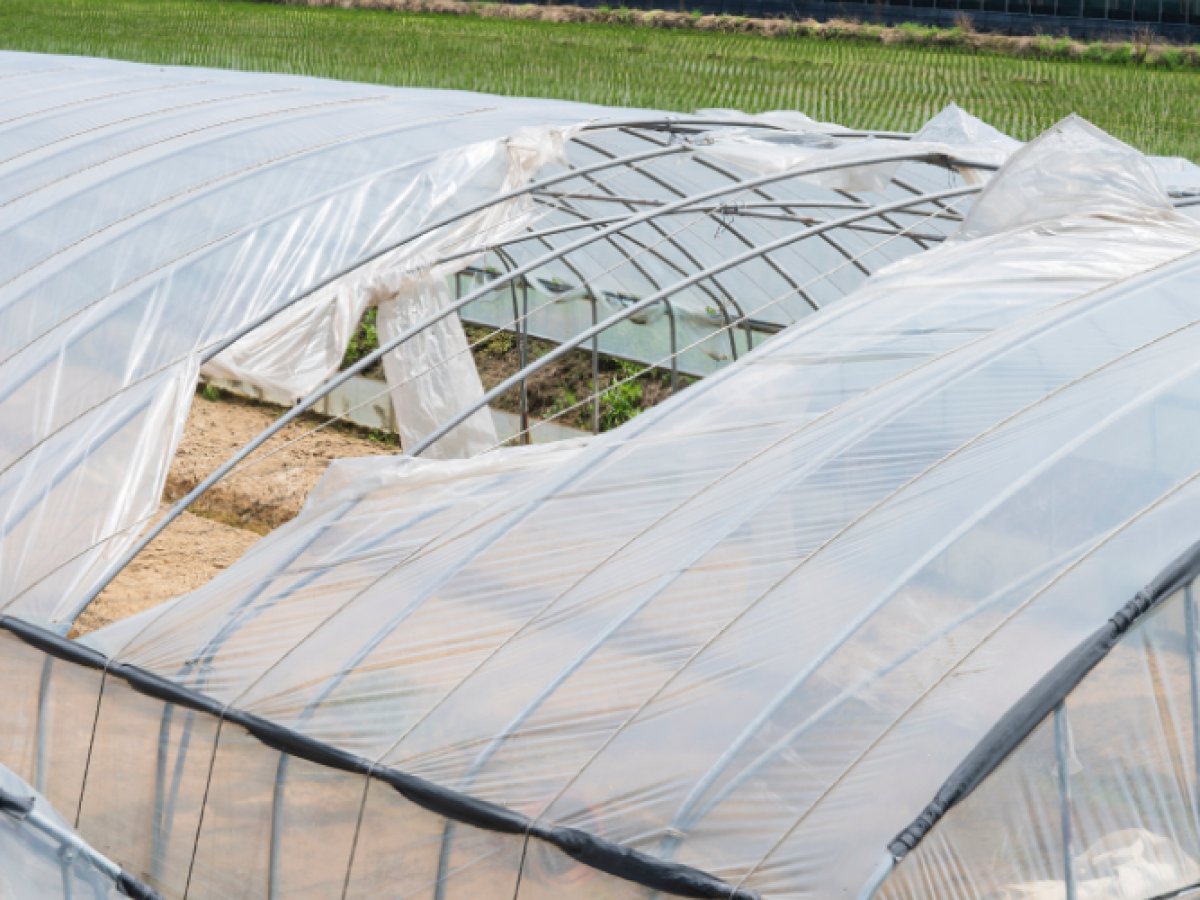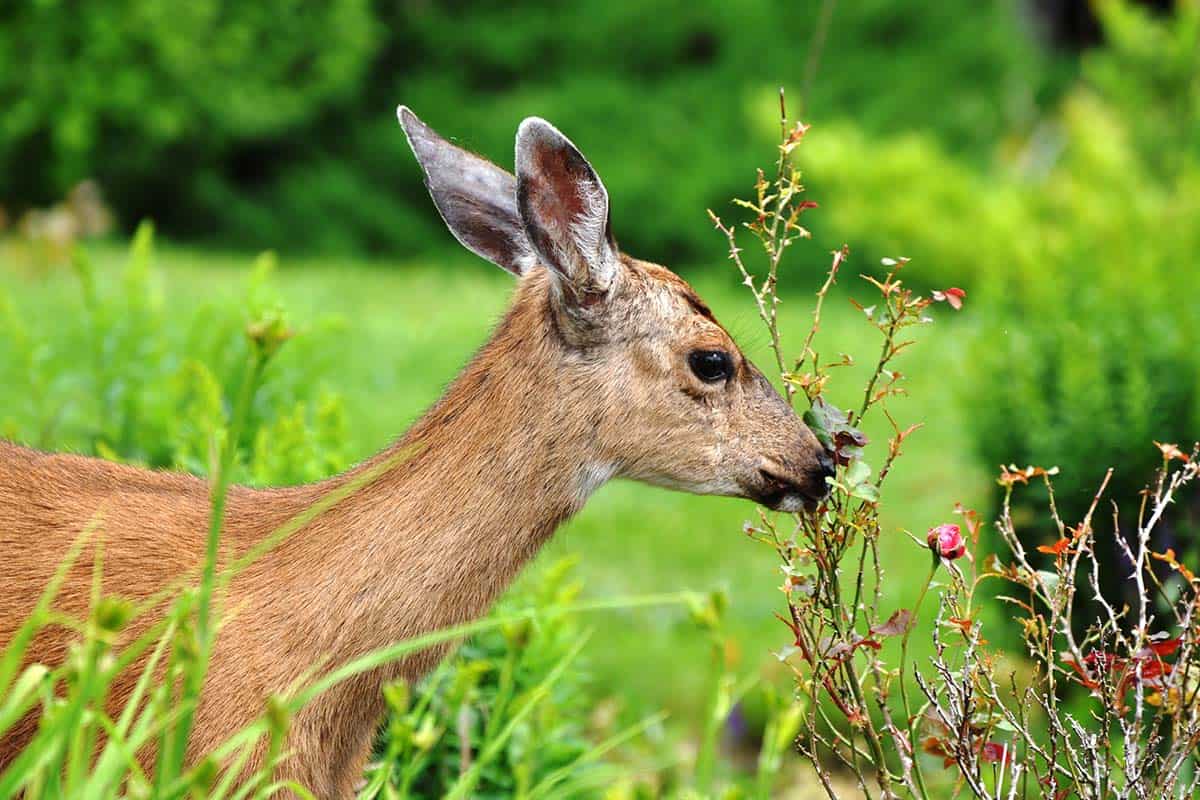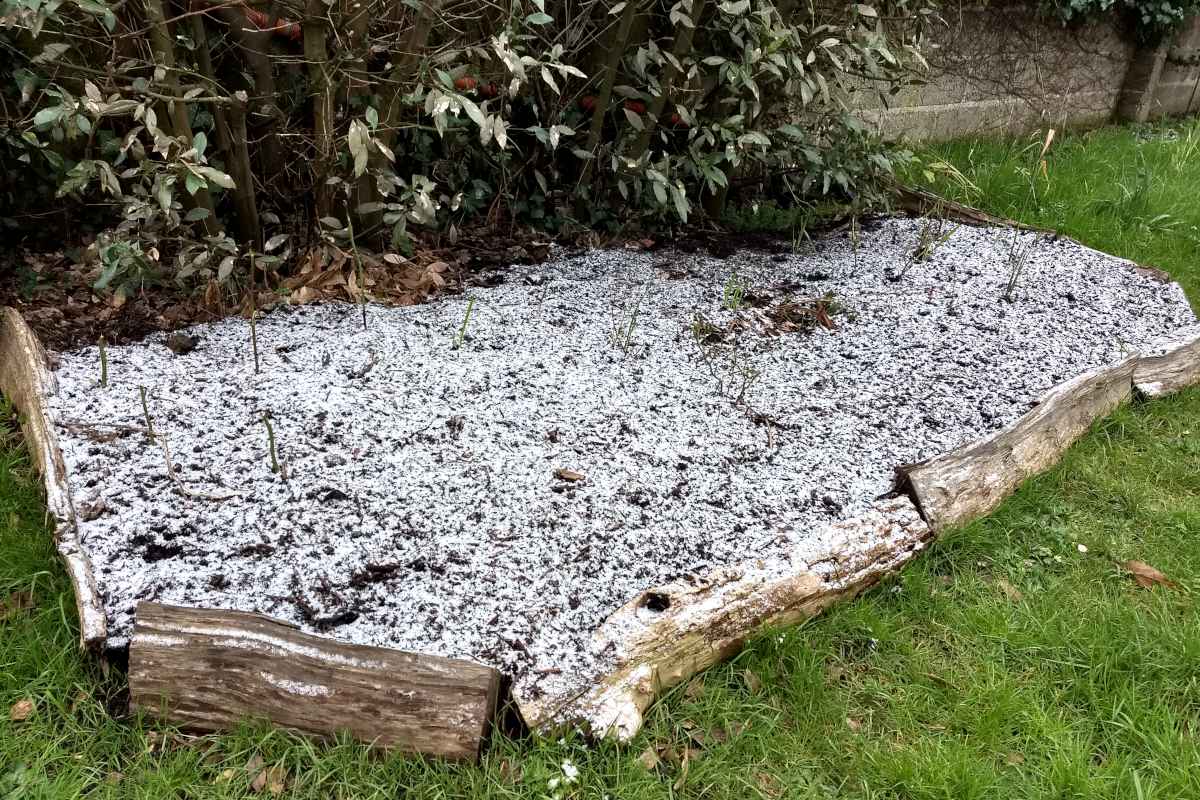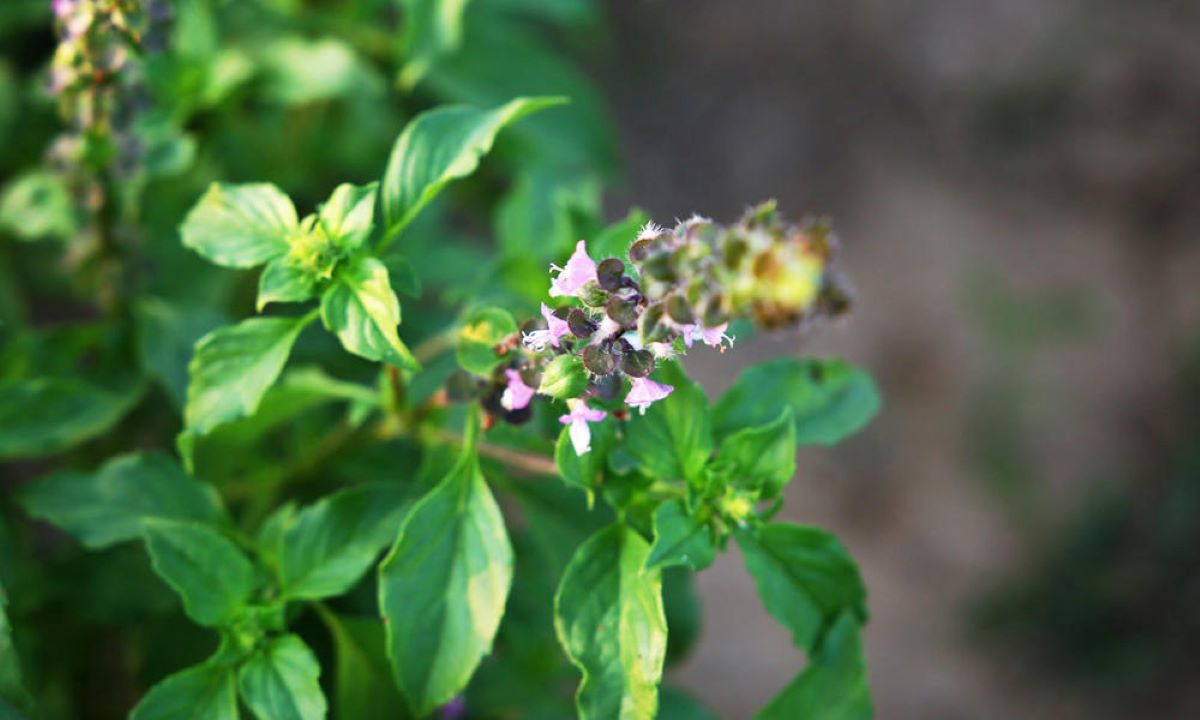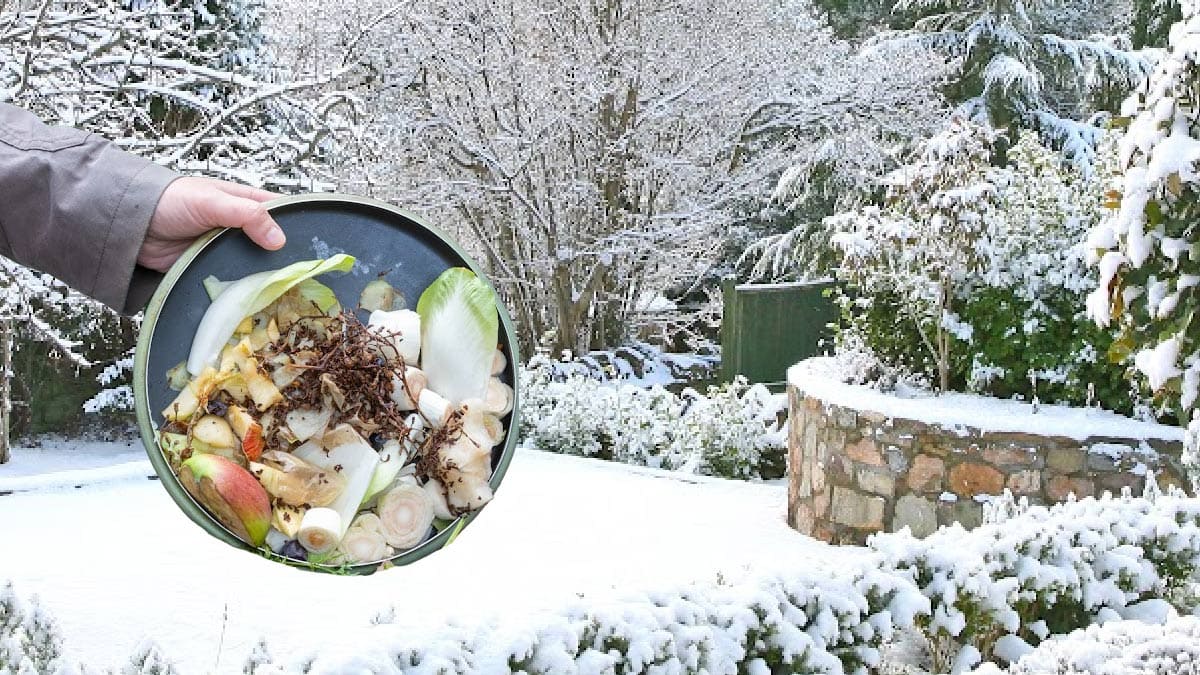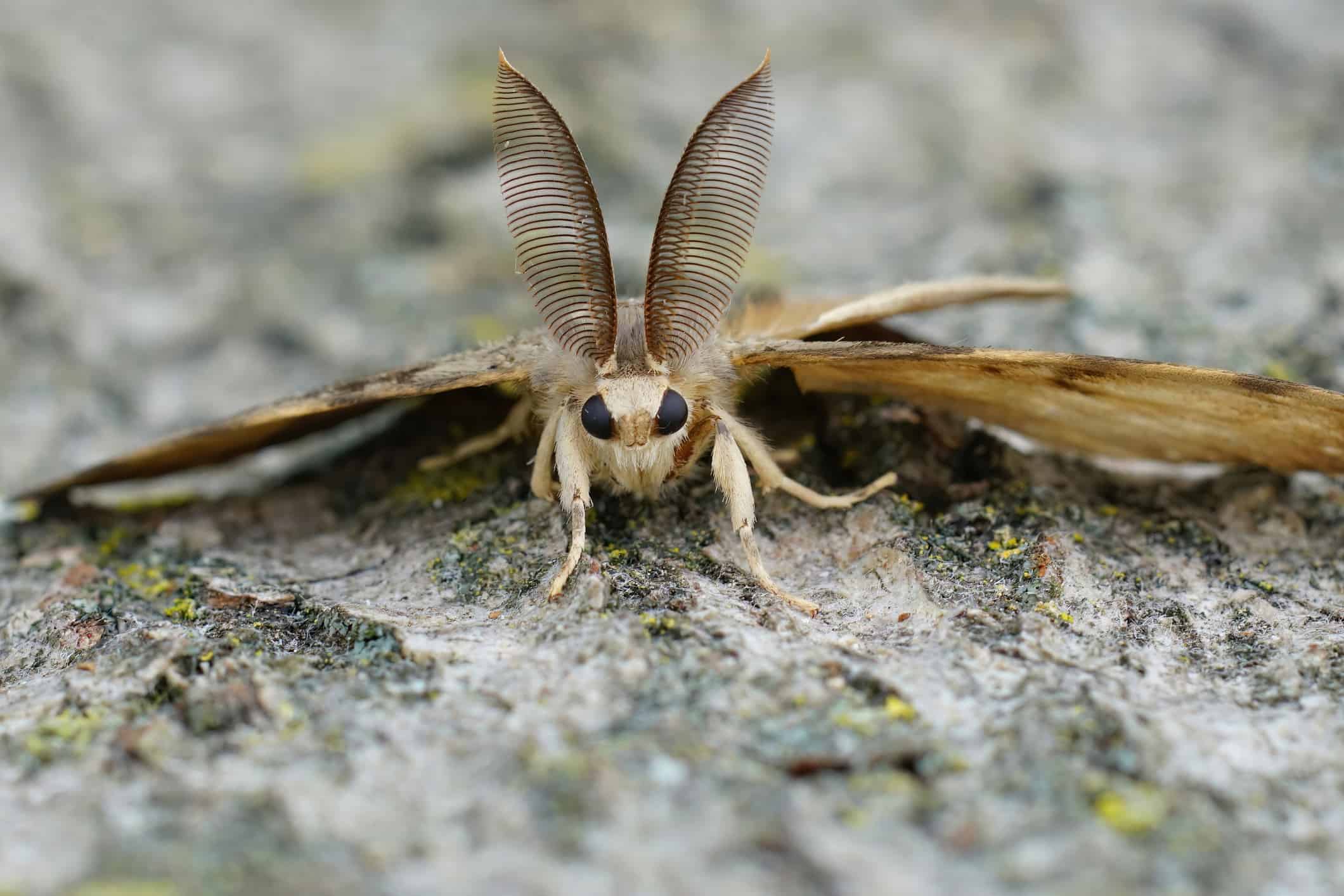Home>Gardening Techniques>Seasonal Gardening>How To Protect Tree Seedlings In Winter
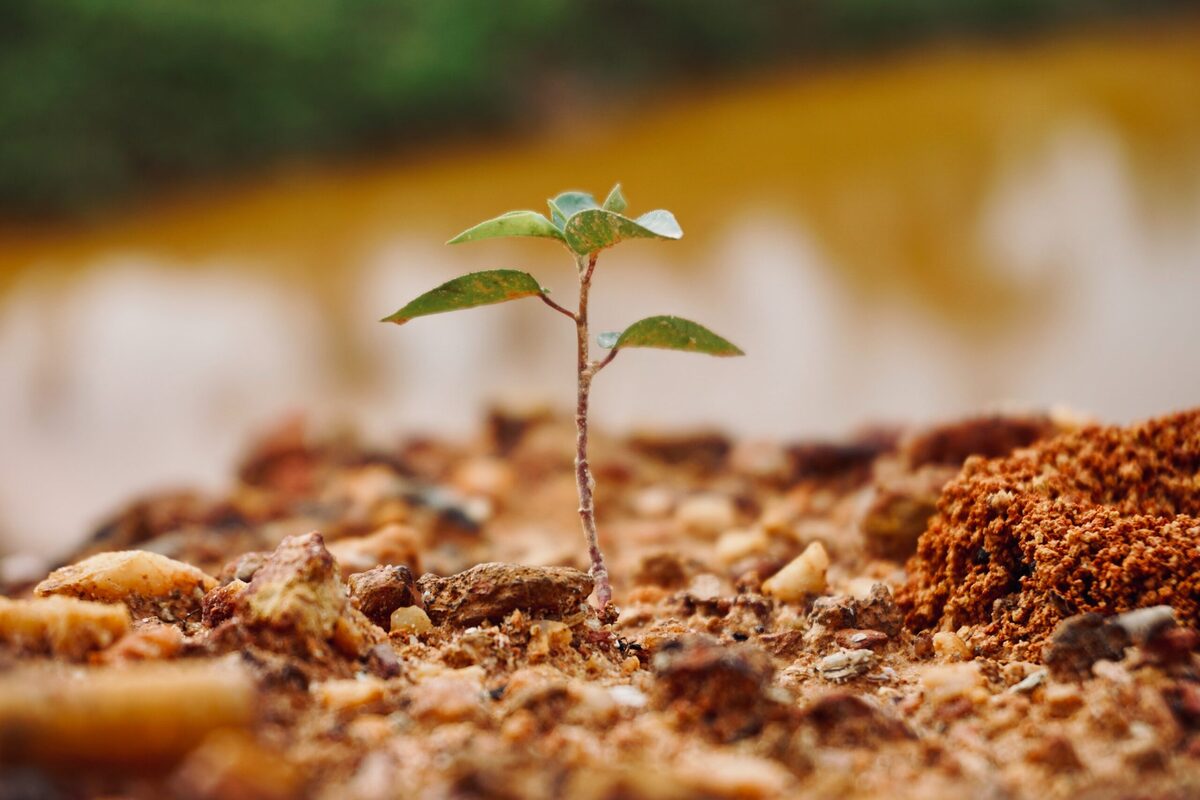

Seasonal Gardening
How To Protect Tree Seedlings In Winter
Published: January 2, 2024
Learn valuable tips and techniques for protecting tree seedlings during the winter months with our comprehensive guide to seasonal gardening.
(Many of the links in this article redirect to a specific reviewed product. Your purchase of these products through affiliate links helps to generate commission for Chicagolandgardening.com, at no extra cost. Learn more)
Table of Contents
- Introduction
- Understanding the Vulnerability of Tree Seedlings in Winter
- Selecting the Right Site for Planting
- Preparing the Soil for Tree Seedlings
- Applying Mulch to Protect Tree Seedlings
- Building Tree Guards for Winter Protection
- Wrapping Tree Seedlings with Burlap
- Watering and Hydrating Tree Seedlings
- Monitoring Tree Seedlings During Winter
- Conclusion
Introduction
Welcome to the world of seasonal gardening, where the beauty of nature unfolds throughout the year. As the seasons change, so do the tasks and challenges that come with maintaining a thriving garden. One particular aspect of seasonal gardening that requires careful attention is protecting tree seedlings during the harsh winter months.
Winter can be a treacherous time for young tree seedlings, as they are particularly vulnerable to the cold temperatures, frost, and other harsh weather conditions. If not properly protected, these fragile seedlings can suffer from frostbite, dehydration, and even death.
However, with the right knowledge and strategies, you can ensure the survival and healthy growth of your tree seedlings throughout the winter season. In this comprehensive guide, we will explore various methods to protect your tree seedlings during winter, ensuring their successful journey from sprouting to maturity.
Whether you are a seasoned gardener or a novice enthusiast, this article aims to equip you with the necessary tools and techniques to safeguard your tree seedlings. By implementing these practices, you will not only protect your investment but also contribute to the overall sustainability of your garden.
So, grab your gardening gloves and let’s dive into the world of winter protection for tree seedlings. Together, we will explore how to select the right planting site, prepare the soil, provide adequate hydration, apply mulch, and construct protective barriers to shield your seedlings from the harsh winter elements. Let us embark on this journey to ensure the survival and success of our beautiful tree seedlings.
Understanding the Vulnerability of Tree Seedlings in Winter
Tree seedlings are delicate and fragile, especially during their first winter. Unlike mature trees, they have not developed a strong root system or thick bark to protect them from the harsh elements. As a result, they are more susceptible to damage caused by freezing temperatures, frost, and desiccation.
One of the main challenges that tree seedlings face in winter is frostbite. Freezing temperatures can cause the water inside the seedling’s cells to expand, leading to cell damage and death. This is especially true for the tender buds and shoots, which are the most vulnerable parts of the seedling.
In addition to frostbite, tree seedlings also face the risk of desiccation or dehydration during winter. The cold, dry air can cause the seedling’s leaves and stems to lose moisture rapidly, leading to wilting and ultimately death. This is a common issue in areas with low humidity or when the soil is frozen and unable to provide moisture to the seedling.
Furthermore, winter weather conditions such as strong winds and heavy snowfall can physically damage tree seedlings. Gusts of wind can break fragile branches and uproot young seedlings, while the weight of snow can bend and snap them. These physical injuries can hinder the seedling’s growth and make it more susceptible to diseases and pests in the following seasons.
Understanding the vulnerabilities that tree seedlings face in winter is crucial for implementing effective protection strategies. By recognizing their weaknesses and addressing them proactively, we can improve their chances of survival and ensure their healthy development throughout the winter season.
In the next sections, we will explore various techniques and methods to shield tree seedlings from these risks and create a safe environment for them to thrive. From selecting the right planting site to constructing protective barriers, we will cover all the essential steps to mitigate the risks and protect our tree seedlings during winter.
Selecting the Right Site for Planting
Choosing the proper site for planting tree seedlings is crucial for their winter survival and long-term growth. The site should provide the right conditions that promote healthy root development and protection from harsh winter elements. Here are some factors to consider when selecting a planting site:
- Sunlight: Tree seedlings need an adequate amount of sunlight to photosynthesize and grow. Choose a site that receives at least six hours of direct sunlight each day. Avoid areas with excessive shade, as this can inhibit their growth and weaken their resistance to winter conditions.
- Soil Drainage: Proper drainage is essential to prevent waterlogging and the freezing of soil around the roots. Avoid areas with poor drainage, such as low-lying areas or heavy clay soils. If the soil is poorly drained, consider improving the drainage by adding organic matter or planting the seedlings on raised beds.
- Wind Exposure: Strong winds can cause desiccation and physical damage to tree seedlings. Look for a site that is protected from prevailing winds, such as near buildings, fences, or natural windbreaks like mature trees or hills. Creating a wind barrier with temporary fencing or burlap wraps can also help protect the seedlings.
- Proximity to Water: Ensure the planting site is within reach of a water source. Tree seedlings require adequate hydration throughout winter, especially in areas where snowfall is scarce. Having access to water will make it easier to supply them with necessary moisture during dry periods.
- Proximity to Structures: Consider the proximity of the planting site to structures such as buildings, utility lines, and paved surfaces. Avoid planting too close to structures as they can restrict root growth and cause long-term damage. Also, be mindful of any potential hazards, such as falling branches or roots potentially damaging nearby structures.
By carefully selecting a suitable planting site, you can offer your tree seedlings the best chance of thriving during winter. Consider the specific needs of the tree species you are planting and choose a location that provides the optimal growing conditions for their success.
In the next section, we will discuss the importance of preparing the soil before planting tree seedlings, and the steps to ensure the soil provides the necessary nutrients, moisture, and support for their healthy development.
Preparing the Soil for Tree Seedlings
The quality of the soil plays a crucial role in the growth and health of tree seedlings. Before planting, it is essential to prepare the soil to provide the necessary nutrients, moisture, and support for the seedlings’ roots. Here are some steps to ensure the soil is well-prepared:
- Soil Testing: Conduct a soil test to determine its pH level and nutrient composition. This will help you understand any deficiencies or imbalances that need to be addressed. Adjust the pH level to the recommended range for your tree species by adding amendments like lime or sulfur.
- Remove Weeds: Clear the planting area of any weeds or grass. Weeds can compete with the seedlings for water, nutrients, and sunlight, hindering their growth. Pull out the weeds by hand or use a hoe, taking care not to disturb the soil structure too much.
- Loosen the Soil: Use a garden fork, spade, or tiller to loosen the soil in the planting area. This improves aeration, facilitates root penetration, and encourages the development of a healthy root system. Avoid over-tilling, as it can lead to compaction and drainage issues.
- Add Organic Matter: Incorporate organic matter like compost or aged manure into the soil. This enriches the soil with nutrients, improves its structure, and enhances moisture retention. Spread a layer of organic matter over the planting area and mix it into the top few inches of soil.
- Avoid Fertilizers: Avoid using high levels of fertilizers at the time of planting. Excessive nitrogen can stimulate rapid growth, making the seedlings more susceptible to winter damage. Instead, focus on providing a well-balanced soil with ample organic matter.
By preparing the soil adequately, you create a favorable environment for the tree seedlings to establish strong roots and withstand winter challenges. The nutrient-rich soil promotes healthy growth, while good drainage prevents waterlogging, reducing the risk of root rot during the winter months.
In the upcoming sections, we will explore different methods to protect tree seedlings during winter, such as applying mulch and constructing protective barriers. These measures will provide the additional layer of insulation and shield the seedlings from freezing temperatures and other harsh elements.
Applying Mulch to Protect Tree Seedlings
Mulching is a valuable practice in protecting tree seedlings during winter. Mulch acts as a protective layer that insulates the soil, regulates temperature fluctuations, conserves moisture, and prevents weed growth. Here are some guidelines for applying mulch to protect tree seedlings:
- Selecting the Right Mulch: Choose organic mulch such as shredded bark, wood chips, straw, or leaves. These materials provide insulation, retain moisture, and slowly break down to enrich the soil. Avoid using plastic or inorganic mulches, as they do not provide the same benefits.
- Preparing the Area: Clear any weeds or grass from around the base of the tree seedlings. This reduces competition for resources and prevents them from growing through the mulch layer. Ensure the area is well-irrigated before applying mulch.
- Applying the Mulch: Spread a layer of mulch around the seedling, starting a few inches away from the base of the trunk. Apply a thickness of 2-4 inches, making sure to cover the entire root zone. Avoid piling the mulch directly against the trunk, as this can trap moisture and encourage rot.
- Expanding the Mulch Ring: Gradually expand the mulch ring as the seedling grows, maintaining the recommended thickness. This helps to create a larger insulated area around the roots and discourages weed growth.
- Maintaining the Mulch Layer: Regularly inspect the mulch layer and replenish it if necessary. Over time, the mulch may break down or get compacted, reducing its effectiveness. Add fresh mulch as needed, especially before the onset of winter.
Applying mulch around tree seedlings provides several benefits during winter. The layer of mulch helps to regulate soil temperature by insulating the roots from extreme cold and heat. It also helps to retain moisture, reducing the risk of dehydration during dry winter periods.
In addition to its protective properties, mulch helps suppress weed growth. Weeds can compete with the seedlings for valuable nutrients and moisture, inhibiting their growth and taking away resources that are vital during winter months.
By applying mulch and maintaining it throughout the winter season, you create a favorable microenvironment for tree seedlings. This increases their chances of surviving the cold temperatures, frost, and other harsh winter conditions.
In the following sections, we will explore additional methods to protect tree seedlings during winter, such as building tree guards and wrapping seedlings with burlap. These techniques provide physical barriers that shield the seedlings from wind, snow, and other potential risks.
Building Tree Guards for Winter Protection
Building tree guards is an effective method to provide physical protection to tree seedlings during winter. Tree guards serve as barriers that shield the seedlings from harsh elements such as strong winds, heavy snowfall, and physical damage. Here’s how you can build tree guards for winter protection:
- Selecting the Materials: Choose materials that are sturdy, durable, and capable of withstanding winter weather conditions. Options include wire mesh, plastic tubes, wooden slats, or a combination of these materials.
- Measurements: Determine the appropriate height and diameter for the tree guard. It should be tall enough to cover the seedling’s above-ground portion and wide enough to provide ample space for growth.
- Constructing the Frame: Use the selected materials to create a frame or cylinder around the seedling. Secure the materials together to ensure stability and strength. Provide ventilation holes or gaps to allow for air circulation and prevent the accumulation of moisture.
- Installing the Tree Guard: Carefully place the constructed tree guard around the seedling, ensuring it is positioned securely in the ground. The guard should extend a few inches above the top of the seedling to allow for growth. Avoid placing the guard too tightly against the seedling, leaving some space for air movement.
- Securing the Tree Guard: Use stakes or other anchors to secure the tree guard to the ground. This prevents it from being dislodged by strong winds or heavy snowfall. Make sure the tree guard is stable and does not pose a risk of falling or damaging the seedling.
- Regular Inspections: Periodically check the tree guards for any damage, such as loose or broken parts. Repair or replace any damaged guards to ensure continued protection during the winter season.
Building tree guards for winter protection provides an extra layer of defense against potential threats. These guards create a physical barrier that shields the seedlings from strong winds, snow accumulation, and physical damage from animals or other external factors.
Tree guards also help create a microclimate within the guard, reducing temperature fluctuations and preventing direct contact between the seedling and potential threats. This controlled environment promotes healthier growth and increases the seedling’s chances of surviving winter.
In the next section, we will explore the use of burlap to wrap tree seedlings, providing them with additional protection from the cold and drying winter winds.
Wrapping Tree Seedlings with Burlap
Wrapping tree seedlings with burlap is a common technique used to protect them from the cold temperatures and drying winter winds. Burlap acts as a barrier, shielding the seedlings from frost, desiccation, and other harsh winter conditions. Here’s how you can wrap tree seedlings with burlap:
- Selecting the Burlap: Choose high-quality burlap that is durable and provides sufficient insulation. The burlap should be large enough to wrap around the entire seedling, but not so tight that it restricts growth or causes damage.
- Preparing the Seedling: Before wrapping, ensure that the seedling is adequately hydrated. Water the seedling thoroughly a day or two before applying the burlap. This helps to prevent dehydration and allows the roots to absorb moisture before winter.
- Wrapping the Seedling: Start by wrapping the burlap around the base of the seedling, ensuring it covers the root zone and reaches up to the first set of branches. Wrap the burlap snugly around the seedling, but not too tight to avoid damaging the bark or constricting growth.
- Securing the Burlap: Use twine or zip ties to secure the burlap in place. Tie the burlap at the top, bottom, and middle of the seedling, making sure it is tightly secured but not overly constrictive. This prevents the burlap from coming loose or blowing away during winter storms.
- Providing Ventilation: Cut several small slits or openings in the top of the burlap to allow for air movement and prevent the buildup of excess moisture. This promotes proper ventilation and reduces the risk of fungal diseases.
- Monitoring and Adjusting: Regularly check the burlap throughout the winter season. Adjust it if necessary to ensure it remains securely in place as the seedling grows. Inspect for signs of damage, such as rodent activity or the burlap becoming excessively wet or moldy.
Wrapping tree seedlings with burlap provides insulation and protection from freezing temperatures and drying winds. The burlap creates a microclimate around the seedling, helping to maintain a more stable temperature and moisture level. This reduces the risk of frostbite and dehydration, increasing the chances of survival during winter.
Burlap also provides some protection against physical damage from animals and prevents direct contact with ice and snow, which can cause breakage and injury to the seedlings.
As we continue our journey to protect tree seedlings during winter, the next section will focus on the importance of proper watering and hydration techniques to ensure the seedlings remain healthy and resilient throughout the cold season.
Watering and Hydrating Tree Seedlings
Proper hydration is crucial for the survival and health of tree seedlings during winter. While it may seem counterintuitive, winter can be a time of increased dehydration for tree seedlings. Cold temperatures, dry air, and frozen soil can hinder the seedlings’ ability to take up water from their surroundings. Here are some guidelines for watering and hydrating tree seedlings during winter:
- Watering Before Winter: Prior to the onset of winter, thoroughly water the seedlings. This helps to ensure they have absorbed sufficient moisture before the ground freezes. Adequate hydration prepares the seedlings for winter and helps them withstand periods of dryness.
- Monitoring Soil Moisture: Regularly check the moisture level of the soil around the seedlings. Use a moisture meter or simply feel the soil with your fingers to assess if it is dry or moist. Aim to keep the soil consistently moist but not waterlogged.
- Providing Supplemental Watering: If the winter season is dry or if there has been a prolonged period without precipitation, provide supplemental watering to the seedlings. Use a gentle, slow watering technique to avoid water runoff and ensure deep penetration into the soil.
- Timing of Watering: Water the seedlings during the warmer parts of the day when the temperatures are above freezing. Watering in the morning allows time for excess moisture to evaporate, reducing the risk of ice buildup around the seedlings.
- Avoid Overwatering: While it is essential to keep the soil moist, avoid overwatering as this can lead to waterlogged conditions and root rot. Ensure the soil has good drainage to prevent water from pooling around the roots of the seedlings.
- Protecting from Frost: In areas with frost-prone temperatures, consider covering the seedlings with a frost cloth or fabric during periods of extreme cold. This additional layer of protection helps to minimize frost damage and maintain a more stable temperature.
By properly watering and hydrating tree seedlings, you provide them with the necessary moisture to withstand the winter season. Adequate hydration helps the seedlings maintain turgidity, supports metabolic functions, and reduces the risk of desiccation and winter damage.
Remember to monitor the soil moisture regularly and adjust your watering practices accordingly. By paying careful attention to the hydration needs of your tree seedlings, you help them survive the winter and emerge stronger and healthier when spring arrives.
As we approach the end of our comprehensive guide on protecting tree seedlings during winter, let’s move on to the final section, which covers the importance of monitoring the seedlings throughout the winter season.
Monitoring Tree Seedlings During Winter
Monitoring tree seedlings during the winter months is a critical aspect of ensuring their survival and well-being. By regularly observing and assessing the condition of the seedlings, you can identify any potential issues or risks and take appropriate actions to mitigate them. Here are some key points to consider when monitoring tree seedlings during winter:
- Visual Inspection: Regularly inspect the seedlings for any signs of damage, disease, or stress. Look for wilting, discoloration, or changes in foliage. Check for physical damage caused by strong winds, snow accumulation, or animal activity.
- Soil Moisture: Continuously monitor the moisture level of the soil. Adjust your watering practices accordingly to ensure the soil remains consistently moist but not waterlogged. Be particularly vigilant during dry spells or if there has been an extended period without precipitation.
- Frost and Ice: Pay attention to frost and ice buildup on the seedlings. Excessive frost can cause damage to the tender tissues, while heavy ice accumulation can weigh down the branches and cause breakage. Take measures to protect the seedlings from frost or ice-related risks if necessary.
- Protection Measures: Evaluate the effectiveness of the mulch, tree guards, or burlap wraps that you have applied. Ensure they are still intact and providing the desired insulation and protection. Make any necessary adjustments or repairs as needed.
- Animal Activity: Monitor for signs of animal activity, particularly if you notice damage to the seedlings or nearby plantings. Look out for chewed branches, overturned soil, or footprints. Take steps to deter animals from causing further harm, such as installing barriers or using repellents.
- Weather Conditions: Stay informed about the upcoming weather conditions and forecasts in your area. Be prepared for extreme temperatures, heavy snowfall, or strong winds. Adjust your monitoring and protection practices accordingly to mitigate risks posed by severe weather events.
Regular monitoring allows you to address potential issues promptly, preventing further damage or loss of seedlings. By being proactive in your observations, you can implement necessary interventions to protect the seedlings, promote their health, and increase their chances of survival throughout the winter season.
Remember, each tree species and gardening region has its own unique considerations, so adapt your monitoring practices accordingly. By closely monitoring your tree seedlings, you can provide the care they need and ensure they are on the right path to thrive and flourish when spring arrives.
With this comprehensive guide to protecting tree seedlings during winter, you are now equipped with the knowledge and strategies to safeguard your plants. By implementing these techniques, you can create a resilient and thriving garden filled with healthy and robust trees.
So, let’s apply our newfound wisdom and enjoy the rewards of a successful winter gardening journey. Happy gardening!
Conclusion
As the seasons change, so do the tasks and challenges that come with seasonal gardening. When it comes to protecting tree seedlings during winter, taking proactive measures is crucial for their survival and success. By understanding the vulnerabilities of tree seedlings in winter, selecting the right planting site, preparing the soil, and implementing protective measures, you can ensure their resilience and healthy growth.
By applying mulch, building tree guards, wrapping seedlings with burlap, and providing adequate hydration, you create a favorable environment that shields the seedlings from freezing temperatures, frost, desiccation, and physical damage. These practices not only protect your investment and effort but also contribute to the overall sustainability and beauty of your garden.
Remember to monitor the seedlings throughout the winter, checking for any signs of stress, disease, or damage. Adjust your watering, protection, and maintenance routines based on their needs and the prevailing weather conditions. Vigilance and timely intervention will ensure their well-being and increase their chances of thriving.
Gardening is a journey of patience, care, and connection with nature. By successfully navigating the challenges of winter, you set the stage for the growth and vitality of your tree seedlings come springtime. As you embark on this journey, remember to stay informed, adapt to the unique needs of your tree species and gardening region, and enjoy the beauty and rewards that seasonal gardening brings.
So, don your gardening gloves, embrace the changing seasons, and watch your tree seedlings flourish and grow into majestic, mature trees. Happy gardening!

